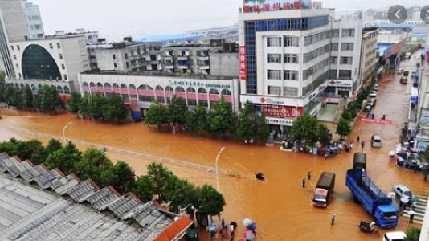
OSLO, Aug 10 (Reuters) - Norway faced more floods and evacuations on Thursday as rivers swelled above their banks to their highest levels in decades after heavy rain that meteorologists said resulted from unusual weather patterns.
More than 4,000 people are currently evacuated from their homes in southern Norway, officials said, almost half of them in the town of Hoenefoss some 40 km (25 miles) north-west of Oslo, an increase from around 3,000 people on Wednesday.
Strong winds, intense rain and landslides hit the Nordic region earlier this week, knocking out power lines and bringing public transport to a standstill.
On Wednesday, a hydroelectric river dam collapsed as water forced its way through, and earlier this week a train derailed in neighbouring Sweden when a railway embankment was washed away by floods.
Main roads were closed and train services suspended across wide parts of southern Norway on Thursday and authorities warned of more flooding ahead, even though the rain had stopped, as the water flows towards lower-lying coastal regions.
"Flooding will probably be a problem for a couple of days more," said Ingvild Villa, a meteorologist at the Norwegian Meteorological Institute (NMI).
Unlike most precipitation to hit Norway, which originates from the west, the latest weather approached from the east when two low pressure systems merged and intensified as they moved towards the Nordic region, the NMI said.
According to the institute, data shows that precipitation in Norway has increased by around 18% over the last 100 years, with the biggest rise taking place in the last 30-40 years.
Jana Sillmann, a research director at the Oslo-based Centre for International Climate Research, said extreme weather events, such as the torrential rain seen this week, will be more frequent as the climate warms.
"Global warming warms the atmosphere and warmer atmosphere can move more water and that's why there's this strong link between warmer climate and more precipitation," said Sillmann, a contributor to reports by the UN panel of climate experts.
"With more warming we will have more moisture in the atmosphere that would be dumped on us in such extreme events," she added.
Countries around the world are this year also battling heatwaves and floods fuelled by El Nino, a naturally occurring climate phenomenon, but Sillmann said it was difficult to know if this was also behind the latest events affecting the Nordics.




